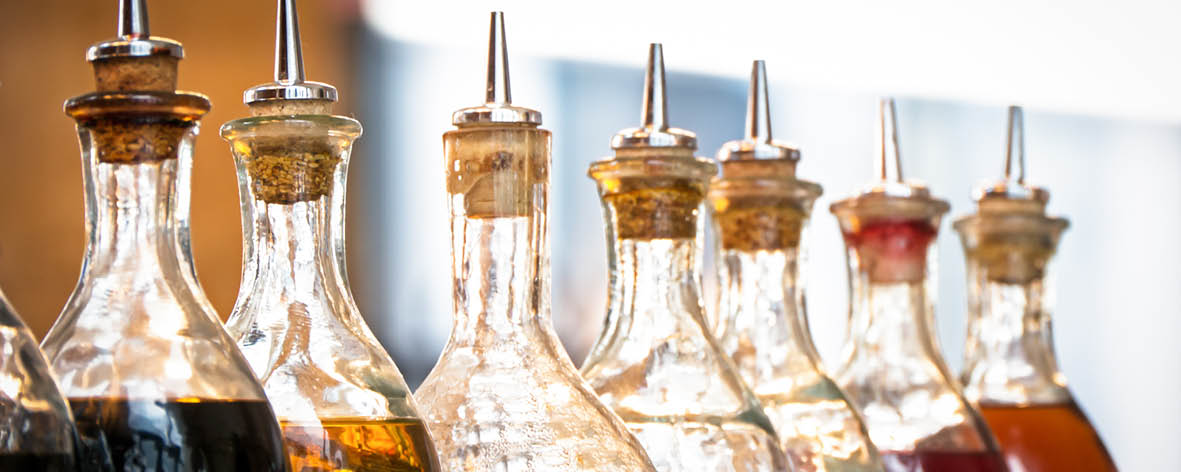All you need to know about … vinegar

Do you know your balsamic from your malt? Apple cider from your red wine? We’re talking vinegar – a culinary and a household staple useful for so many things. Find out when and how to use it in our easy guide.
Many of us grew up in a time when there was one type of vinegar on the shelves – white vinegar. These days it seems there are a multitude of vinegars available, and their flavours and uses are just as varied.
Vinegar has been a popular condiment throughout Europe and Asia for thousands of years. It is used for adding acidity to dishes, pickling, making dressings, glazing, as a health tonic, and even as a cleaning agent and preservative.
Vinegar is made by a second fermentation of alcohol made from fruits, vegetables, grains or even honey. In this second fermentation the alcohol is exposed to oxygen and acetic acid bacteria, turning the alcohol sour.
Apple cider vinegar is made from fermented apples. Use it in salad dressings and marinades. It is excellent for sauerkraut and pickling. It is touted as a health tonic, some advocating a shot-glass of apple cider vinegar a day to be helpful for many conditions such as obesity, arthritis, constipation, and to regulate blood sugar. It should be diluted with water due to its ability to damage tooth enamel. Some also recommend it as a hair rinse diluted 50-50 with water and is claimed to assist with dandruff and impart a healthy shine to hair.
Balsamic vinegar is a speciality vinegar from near Modena in northern Italy. It is made with unfermented trebbiano grape juice (must) which is first boiled down before fermentation begins. This creates Balsamic vinegar’s characteristic caramel flavours. This is fermented in barrels where the alcohol converts to acetic acid. This is then aged in small wooden barrels for between 5 and 30 years to produce a powerful, slightly sweet and syrupy vinegar. It is highly prized and priced accordingly. Balsamic vinegar can add a touch of acidity to risotto, soup, meat and fish. Use a Balsamic aged over ten years to accompany cheese, ice-cream or desserts, over tomatoes and salad greens, and over sugared strawberries.
Distilled white vinegar is made from grain alcohol and is your basic industrial vinegar with many uses. It’s great for pickling and fine as an everyday vinegar in most recipes. It is also a great stain remover, can defog mirrors, clean stainless steel, and with bicarbonate of soda, is an effective oven cleaner and mild abrasive.
Red wine vinegar will give a pink hue and slightly fruity flavour to your cooking. It’s great for marinades, pickling and salad dressings.
White wine vinegar is much less acidic than distilled white vinegar and is good for making hollandaise sauce, mayonnaise, vinaigrettes, pickling, and dressing coleslaws and potato salads.
Rice wine vinegar is made from fermented rice wine and is used in in Asian cooking for sauces, marinades, stir fries, dipping sauces and sushi.
Malt vinegar is a dark, mellow vinegar made from ale. With a nutty, toasty flavour it is delicious on roasted potatoes, French fries, and is a classic accompaniment to fish and chips. It can also be used in dressings, marinades, for pickling and in chutneys and sauces.

